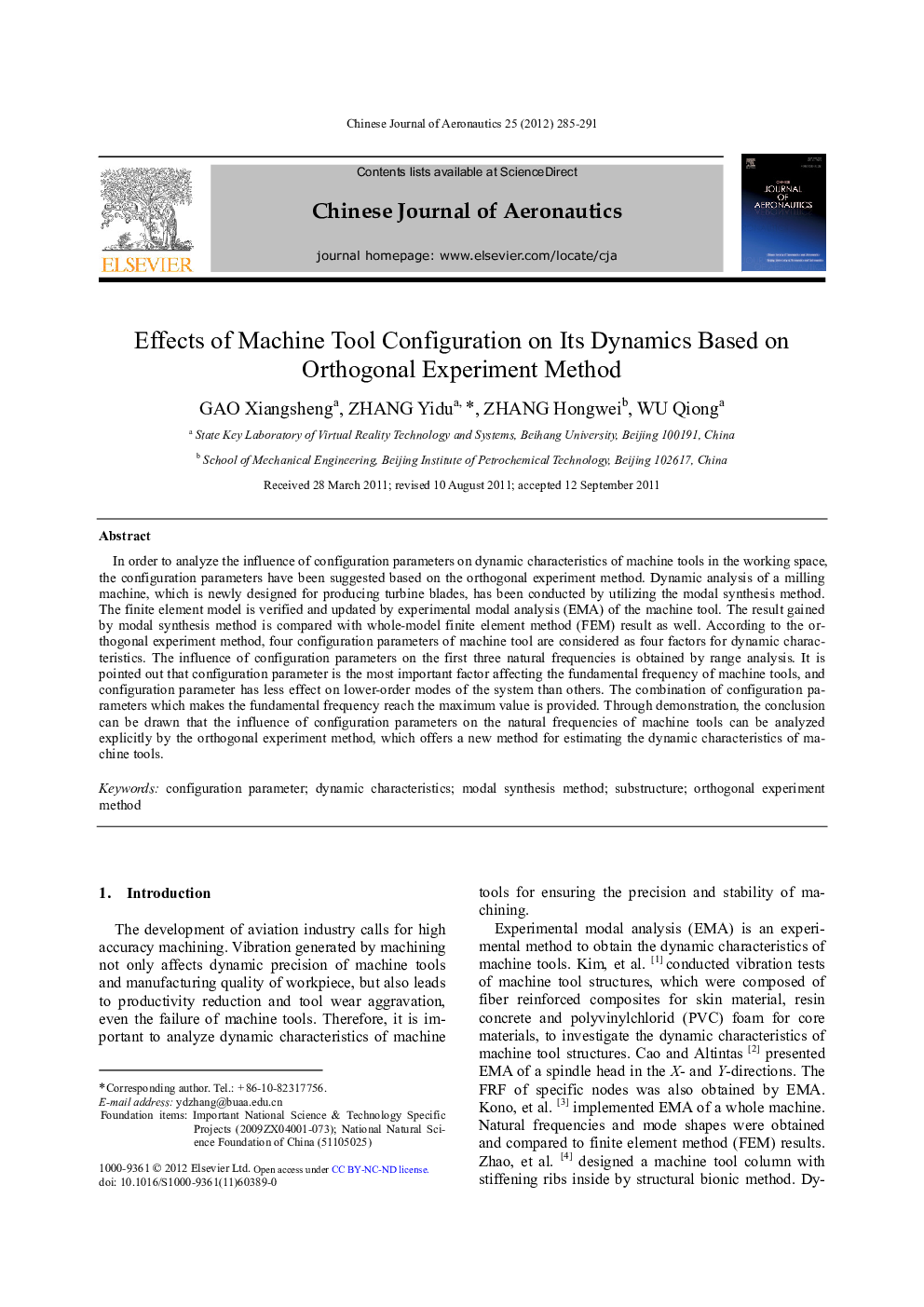| کد مقاله | کد نشریه | سال انتشار | مقاله انگلیسی | نسخه تمام متن |
|---|---|---|---|---|
| 757579 | 1462526 | 2012 | 7 صفحه PDF | دانلود رایگان |

In order to analyze the influence of configuration parameters on dynamic characteristics of machine tools in the working space, the configuration parameters have been suggested based on the orthogonal experiment method. Dynamic analysis of a milling machine, which is newly designed for producing turbine blades, has been conducted by utilizing the modal synthesis method. The finite element model is verified and updated by experimental modal analysis (EMA) of the machine tool. The result gained by modal synthesis method is compared with whole-model finite element method (FEM) result as well. According to the orthogonal experiment method, four configuration parameters of machine tool are considered as four factors for dynamic characteristics. The influence of configuration parameters on the first three natural frequencies is obtained by range analysis. It is pointed out that configuration parameter is the most important factor affecting the fundamental frequency of machine tools, and configuration parameter has less effect on lower-order modes of the system than others. The combination of configuration parameters which makes the fundamental frequency reach the maximum value is provided. Through demonstration, the conclusion can be drawn that the influence of configuration parameters on the natural frequencies of machine tools can be analyzed explicitly by the orthogonal experiment method, which offers a new method for estimating the dynamic characteristics of machine tools.
Journal: Chinese Journal of Aeronautics - Volume 25, Issue 2, April 2012, Pages 285-291